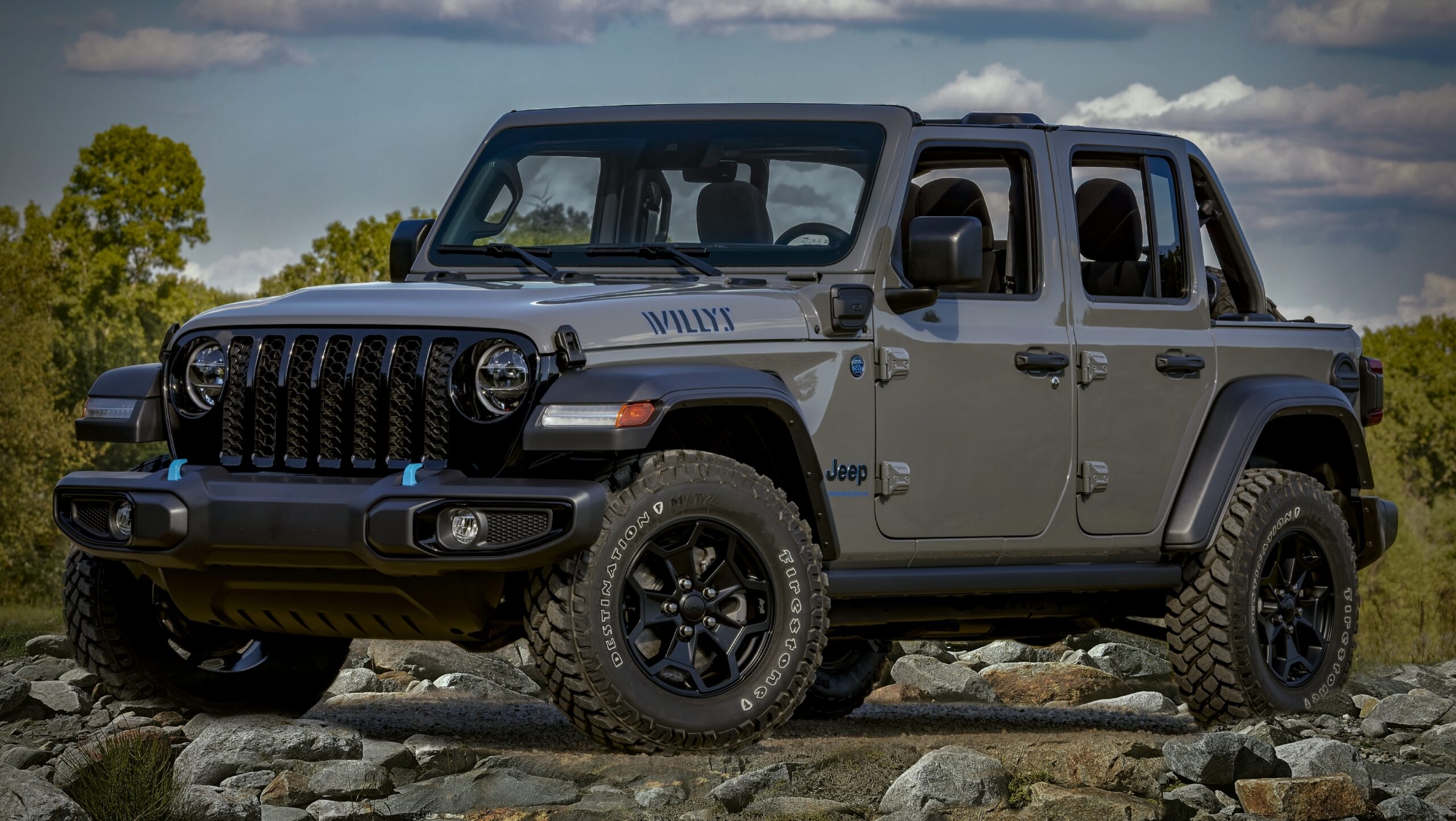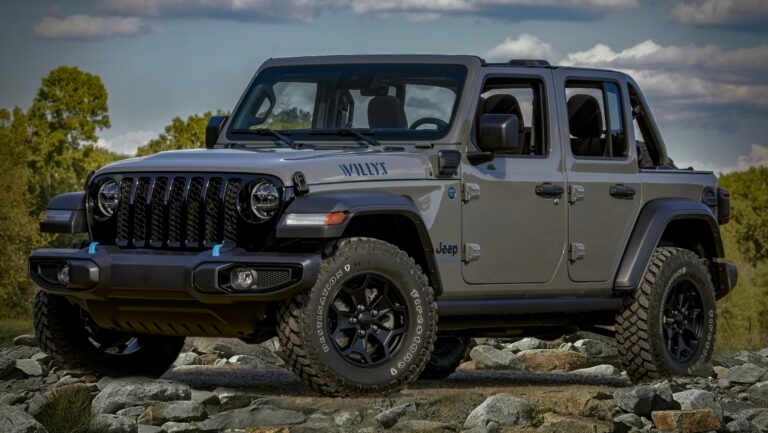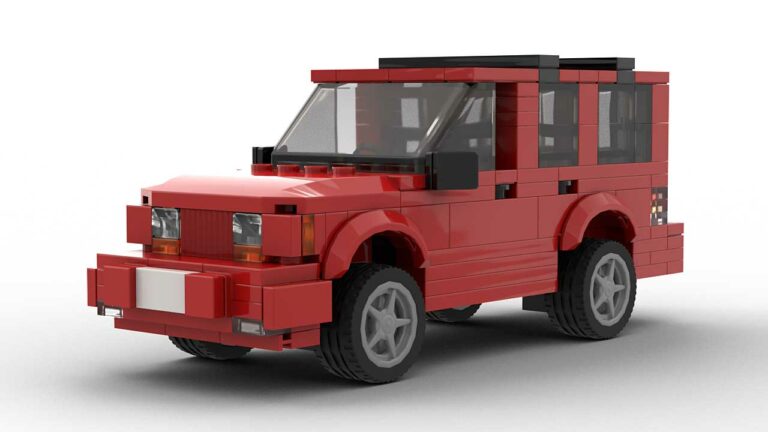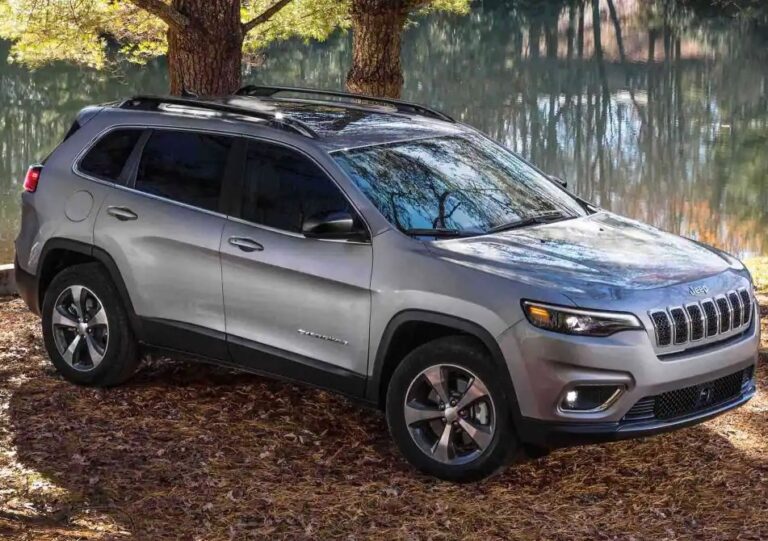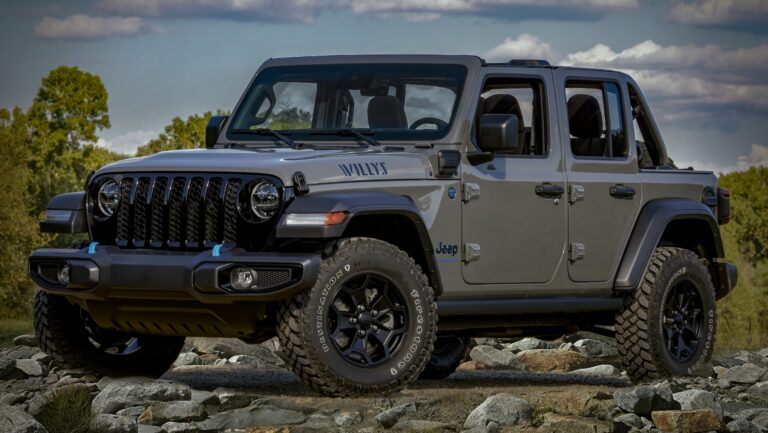Jeep Wrangler 2 Door Build: Crafting Your Ultimate Off-Road Machine
Jeep Wrangler 2 Door Build: Crafting Your Ultimate Off-Road Machine jeeps.truckstrend.com
The Jeep Wrangler, in its iconic 2-door configuration, stands as a testament to automotive heritage and an unyielding spirit of adventure. More than just a vehicle, it’s a blank canvas for enthusiasts eager to personalize their ride, enhancing its legendary off-road prowess or tailoring it for specific adventures. A "Jeep Wrangler 2 Door Build" refers to the comprehensive process of modifying, upgrading, and customizing this already capable machine to meet an owner’s unique demands, whether it’s tackling extreme rock crawling, embarking on remote overlanding expeditions, or simply making a statement on the street. This detailed guide will delve into the multifaceted world of transforming your 2-door Wrangler, providing insights, practical advice, and a roadmap for building your dream rig.
Why Build a 2-Door Wrangler? The Advantages of Agility
Jeep Wrangler 2 Door Build: Crafting Your Ultimate Off-Road Machine
Before diving into the nuts and bolts, it’s worth understanding the inherent appeal of the 2-door Wrangler as a build platform. Its shorter wheelbase offers unparalleled maneuverability, making it ideal for navigating tight trails, weaving through dense forests, and conquering challenging obstacles where longer vehicles might struggle. This agility, combined with its lighter weight, often translates to less stress on components and better fuel economy (relatively speaking for a Jeep!). Furthermore, the classic, nimble aesthetic of the 2-door is highly coveted by purists and those who appreciate its historical lineage. Building a 2-door allows for a highly focused, purpose-driven machine that excels in specific off-road scenarios, often with a more budget-friendly entry point than its 4-door counterpart.
Planning Your Build: The Foundation of Success
The most critical phase of any Jeep build begins long before a single wrench is turned: meticulous planning. Without a clear vision, you risk wasting time, money, and effort on incompatible parts or modifications that don’t align with your goals.
-
Define Your Purpose: What will your Jeep primarily be used for?
- Daily Driver with Weekend Trails: Focus on mild lifts, all-terrain tires, and basic protection without sacrificing comfort or on-road manners.
- Rock Crawling: Prioritize extreme articulation, heavy-duty axles, lockers, low gearing, and robust armor.
- Overlanding/Expedition: Emphasize cargo capacity, reliable power, recovery gear, communication systems, and comfortable camping setups.
- Mud Bogging: Large tires, significant lift, sealed components, and specialized drivetrain protection.
- Show Rig: Aesthetic appeal, unique paint, custom interiors, and flashy accessories.
Defining this purpose will dictate every component choice.


-
Set a Realistic Budget: Jeep builds can be as inexpensive or as costly as you allow. Research the price ranges for the components you anticipate needing and factor in potential installation costs if you’re not doing the work yourself. It’s wise to allocate an additional 10-15% for unforeseen expenses.
-
Research, Research, Research: Dive into forums, YouTube channels, and manufacturer websites. Learn about different brands, component compatibility, common issues, and successful build strategies from others. Understanding the pros and cons of various approaches will save you headaches down the line.
-
Phased Approach: Unless you have an unlimited budget, consider building your Jeep in phases. Start with foundational upgrades (e.g., lift and tires), then move to drivetrain, armor, and accessories as budget allows. This also gives you time to assess how each modification affects performance and identify what’s truly needed next.

Key Build Stages & Component Selection
Once your plan is solid, it’s time to explore the essential components that will transform your 2-door Wrangler.
1. Suspension & Lift Kits
This is often the first and most noticeable modification. A lift kit increases ground clearance and allows for larger tires, improving approach, departure, and break-over angles.
- Types:
- Spacer Lifts (Budget Boosts): Inexpensive, simple to install, but don’t improve suspension travel or ride quality. Good for mild lifts (1-2 inches).
- Coil Spring Lifts: Replace stock coil springs with longer ones. Offer better ride quality and articulation than spacers. Available in various heights (2-4 inches common for 2-door).
- Short Arm vs. Long Arm: Short arm kits are simpler and more affordable for lifts up to 3.5 inches. Long arm kits, though more expensive and complex, offer superior articulation and a better ride for lifts 4 inches and above by relocating control arm mounting points.
- Considerations: Lift height impacts steering geometry, driveline angles, and brake line length. You may need adjustable control arms, track bars, extended brake lines, and possibly a new driveshaft to correct geometry and prevent issues like "death wobble" or driveline vibrations.
2. Tires & Wheels
The right tire and wheel combination is paramount for off-road performance and the overall look of your build.
- Tire Size: Typically dictated by lift height and intended use. Common sizes for 2-doors range from 33 to 37 inches. Larger tires require more significant drivetrain modifications.
- Tire Type:
- All-Terrain (AT): Good balance for daily driving and light to moderate off-roading.
- Mud-Terrain (MT): Aggressive tread for excellent traction in mud, rocks, and loose terrain, but noisier on-road.
- Hybrid: A blend of AT and MT characteristics.
- Wheels:
- Backspacing: Crucial for tire clearance. Less backspacing pushes the wheel out, preventing rubbing against suspension components.
- Beadlock Wheels: Secure the tire bead to the rim, allowing for extremely low tire pressures off-road without the tire separating from the wheel. Primarily for dedicated off-roaders.
3. Drivetrain & Axles
As you go larger with tires, the stock drivetrain can become a weak link.
- Gearing: Larger tires effectively raise your axle ratio, reducing power and fuel efficiency. Re-gearing (installing lower numerically higher gears in your differentials) is highly recommended for tires 35 inches and larger to restore performance and reduce stress on the engine and transmission.
- Lockers: Selectable or automatic lockers maximize traction by forcing both wheels on an axle to spin at the same rate. Essential for challenging terrain.
- Axle Upgrades: Stock Dana 30 front axles on many Wranglers are prone to bending or breaking with larger tires and aggressive off-roading. Upgrading to a Dana 44, Dana 60, or even aftermarket full-float axles is common for serious builds.
4. Armor & Protection
Protecting your investment is key, especially when tackling challenging trails.
- Bumpers: Aftermarket bumpers offer improved approach/departure angles, provide mounting points for winches and recovery shackles, and offer superior protection over stock.
- Rock Sliders: Protect the rocker panels (the body area between the front and rear wheels) from impacts with rocks and obstacles.
- Skid Plates: Protect vital underbody components like the oil pan, transmission, transfer case, and fuel tank from impacts.
- Fender Flares: Flat or high-clearance fender flares allow for larger tires without excessive rubbing and provide better tire coverage (important for legal compliance in some areas).
5. Recovery Gear & Winches
Safety and self-sufficiency are paramount on the trail.
- Winch: An electric winch is invaluable for self-recovery or assisting others. Match its capacity to at least 1.5 times your Jeep’s Gross Vehicle Weight Rating (GVWR).
- Recovery Points: Ensure your bumpers or frame have strong, accessible points for shackles and straps.
- Basic Recovery Kit: Include kinetic recovery straps, tree savers, D-ring shackles, a snatch block, and a shovel.
6. Lighting & Electrical
Enhanced lighting improves visibility and safety, especially during night wheeling.
- LED Light Bars/Pods: Provide powerful, focused light for trails.
- Auxiliary Switches: Manage additional electrical components neatly.
- Dual Battery Systems: For running accessories or a fridge without draining the starting battery.
7. Interior & Comfort
Don’t forget the inside, especially for overlanding or long trips.
- Storage Solutions: Organize gear and maximize space in the compact 2-door.
- Communication: CB radio or Ham radio for trail communication.
- Navigation: GPS units or robust smartphone mapping apps.
- Seats: Aftermarket seats can offer better support and comfort for extended periods.
DIY vs. Professional Installation
The decision to install components yourself or hire a professional depends on your mechanical skill, available tools, and budget.
- DIY (Do-It-Yourself):
- Pros: Saves labor costs, provides a deep understanding of your vehicle, immense satisfaction.
- Cons: Requires significant time, specialized tools, and technical knowledge. Mistakes can be costly or dangerous.
- Professional Installation:
- Pros: Ensures correct installation, often comes with warranties, saves time.
- Cons: Higher overall cost due to labor fees.
For critical components like suspension, axles, and gearing, if you’re not fully confident, professional installation is often the safer and more reliable choice.
Legal & Safety Considerations
Always be aware of local laws regarding vehicle modifications, especially lift height and tire coverage. Ensure all modifications are performed correctly to maintain vehicle safety and integrity. Regular maintenance and post-mod checks (e.g., re-torquing bolts) are crucial.
Common Challenges and Solutions
- Death Wobble: A violent, uncontrollable shaking of the front end, often triggered by a bump. Usually caused by worn or misaligned steering/suspension components. Proper alignment, quality adjustable components, and diagnosing worn parts are key.
- Driveline Vibrations: Can occur after a lift due to altered driveshaft angles. Solutions include transfer case drop kits, adjustable control arms to correct pinion angle, or upgraded CV-style driveshafts.
- Budget Creep: It’s easy to get carried away. Stick to your plan and budget, and prioritize essential upgrades.
Price Table: Estimated Costs for a Jeep Wrangler 2 Door Build
Please note: These are estimated ranges and can vary significantly based on brand, quality, location, and whether you DIY or pay for professional installation. This table assumes a build aiming for capable off-road performance.
| Component Category | Description | Estimated Price Range (USD) |
|---|---|---|
| Lift Kit | 2.5" – 3.5" Coil Spring Lift Kit (e.g., TeraFlex, AEV, Rough Country) | $800 – $3,000+ |
| Tires (Set of 5) | 35" – 37" Mud-Terrain or Hybrid Tires (e.g., BFG, Nitto, Goodyear) | $1,500 – $3,000+ |
| Wheels (Set of 5) | 17" Aftermarket Wheels (e.g., Method, Fuel, Black Rhino) | $800 – $2,000+ |
| Front Bumper | Steel, Winch-Ready Bumper (e.g., Smittybilt, ARB, Warn) | $400 – $1,500+ |
| Rear Bumper | Steel Bumper (often with tire carrier) | $400 – $1,800+ |
| Winch | 9,500 – 12,000 lbs capacity (e.g., Warn, Smittybilt, Badland) | $400 – $1,500+ |
| Rock Sliders | Frame-mounted or Body-mounted | $300 – $1,000+ |
| Skid Plates | Underbody Protection (oil pan, transmission, transfer case, fuel tank) | $500 – $2,000+ |
| Gears (Re-gearing) | Front & Rear Differential Re-gearing (parts & labor) | $1,500 – $3,000+ |
| Lockers | Front & Rear Selectable Lockers (parts & labor) | $1,800 – $4,000+ |
| Axle Upgrades | Chromoly shafts, C-gussets, or full axle swap (if needed) | $500 – $10,000+ (major swap) |
| Fender Flares | Flat or High-Clearance Flares | $300 – $800+ |
| Lighting | LED Light Bar, Pods, A-Pillar Lights | $200 – $1,000+ |
| Recovery Gear | Straps, Shackles, Jack | $200 – $500+ |
| Installation Labor | Professional labor for major components (highly variable) | $1,000 – $5,000+ |
| Miscellaneous | Alignment, Programming (e.g., AEV ProCal), Fluids, Small Parts | $300 – $1,000+ |
| Total Estimated Build Cost | (Excluding base vehicle purchase price) | $10,000 – $40,000+ |
Frequently Asked Questions (FAQ)
Q1: How much does a good 2-door Jeep Wrangler build cost?
A1: A decent, capable off-road build can range from $10,000 to $25,000 or more, not including the cost of the vehicle itself. Factors like part quality, extent of modifications, and professional installation significantly impact the total.
Q2: What’s the best lift size for a 2-door Wrangler?
A2: For a balance of off-road capability and on-road manners, 2.5 to 3.5 inches is a popular sweet spot, allowing for 35-inch tires with minimal additional modifications beyond the lift itself. For 37-inch tires, 3.5 to 4 inches is often required, along with more extensive drivetrain upgrades.
Q3: Do I need to re-gear my Jeep for larger tires?
A3: Yes, it is highly recommended, especially for tires 35 inches and larger. Re-gearing restores lost power, improves fuel economy (relative to stock with big tires), and reduces strain on the engine and transmission.
Q4: Can I install modifications myself?
A4: Many common modifications, like lift kits, bumpers, and lights, can be installed by a competent DIYer with proper tools and patience. However, complex jobs like re-gearing or axle swaps typically require specialized tools and expertise, making professional installation advisable.
Q5: What is "death wobble" and how do I prevent it?
A5: Death wobble is a violent, uncontrolled shaking of the front end, often caused by loose, worn, or misaligned steering and suspension components. Preventing it involves using quality components, ensuring proper alignment (caster angle is crucial), and regularly inspecting steering and suspension parts for wear.
Q6: How long does a typical build take?
A6: This varies widely. A simple lift and tire swap might take a weekend for a DIYer. A comprehensive build done in phases can take months or even years as budget and time allow. Professional shops can complete a full build in a matter of weeks, depending on parts availability and their schedule.
Conclusion
Building a Jeep Wrangler 2-door is an incredibly rewarding endeavor, transforming an already iconic vehicle into a personalized extension of your adventurous spirit. It’s a journey of learning, problem-solving, and ultimately, unlocking new levels of capability and enjoyment. From meticulous planning to the careful selection of each component, every step contributes to creating a machine that is uniquely yours, ready to conquer any trail and turn heads wherever it goes. Embrace the process, prioritize safety, and enjoy the unparalleled freedom that comes with a perfectly built 2-door Jeep Wrangler.

